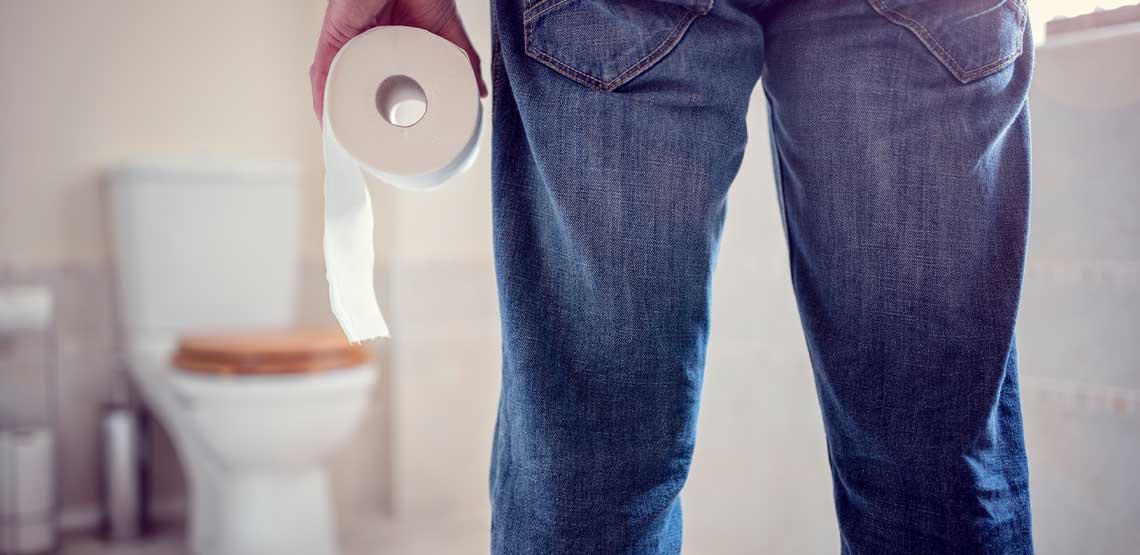How to Treat External Hemorrhoids
Hemorrhoids, commonly known as piles, are one of the most common causes of rectal bleeding. Hemorrhoids are either internal or external, based on their location. External hemorrhoids are present under the skin around the anal area. They cause the overlying skin to become irritated, and often lead to erosion of the overlying skin; the number of pain-sensing nerves is quite high around this area, making external hemorrhoids very uncomfortable. Further, if a blood clot develops within an external hemorrhoid, pain can come on suddenly and be excruciating.
Treatment of External Hemorrhoids
1. Don’t Ignore the Urge to Defecate
If you feel that you have to have a bowel movement, do not ignore this sensation. Stool can easily back up, leading to increased pressure and straining. If you're unable to go, you can take a stool softener such as Colace to help provide relief.
It’s also recommended to plan a particular time each day to sit on the toilet and try to have a bowel movement; this will help you to establish a regular bowel movement habit.
2. Drink Fluids and Add Fiber to Your Diet
Adding fiber into your diet and consuming enough fluids are essential for keeping your stools soft, making them easier to pass through the rectum, and reducing pressure on external hemorrhoids.
High-fiber foods include whole grains, oats, bran, broccoli and fresh fruits. Additionally, fiber supplements, such as Metamucil or Fiber Con, can help to increase your fiber intake.
It’s important to keep in mind that increasing fiber in your diet can cause bloating and gas, so increase your fiber intake slowly. Aim to have your fiber intake be around 25 to 30 grams per day.
3. Exercise Regularly
Aerobic exercise, including activities such as brisk walking for 20 to 30 minutes a day, can also help encourage normal bowel function.
Related Search Topics (Ads)
4. Take a Sitz Bath
Taking a sitz bath, which involves sitting in warm water, can help to relieve itching, irritation and contractions of the sphincter muscle. Taking a 20-minute sitz bath, either using a plastic tub that fits over the toilet seat or by sitting in a bathtub with a few inches of water, two to three times per day can help to relieve symptoms of external hemorrhoids.
5. Apply Topical Treatments
There are several over-the-counter hemorrhoid creams, which contain a local anesthetic that can temporarily relieve pain associated with external hemorrhoids. Witch hazel wipes are another option that provide soothing relief with no side effects.
Additionally, applying an ice pack to the anal area for 10 to 15 minutes at a time can help to decrease pain and swelling associated with external hemorrhoids.
6. Sit on a Cushion
Sitting on a cushion, instead of a hard surface, can help to reduce the swelling of external hemorrhoids, and can help to prevent the formation of new hemorrhoids.
7. Take Non-Steroidal Anti-Inflammatory Drugs (NSAIDs)
Taking an NSAIDs for the relief of hemorrhoids is also an option if your symptoms are severe. They can help to decrease inflammation and pain associated with external hemorrhoids.
8. Treat Any Associated Clots
If a clot forms in an external hemorrhoid, the pain can be terrible. If you are able to tolerate the pain and the clot has been around for more than two days, you can apply the above-mentioned home therapies to control your symptoms. However, if you notice a recent clot, or if the pain is too severe to manage, the clot can either be taken out of the vein or the hemorrhoid can be surgically removed with a minor office procedure at your doctor’s office.
For large or severe external hemorrhoids, and for those that persist despite treatment, more invasive treatments may be necessary, including:
- Rubber band ligation.
- Traditional hemorrhoidectomy.
- Stapled hemorrhoidectomy.
Symptoms of External Hemorrhoids
Symptoms of external hemorrhoids may include the following:
- Extreme pain.
- Bleeding.
- Itching.
- Swelling.
- Skin cracking.
- Hard lumps near the anal area.
Causes of External Hemorrhoids
Excessive straining when having a bowel movement, or sitting on the toilet for too long can cause external hemorrhoids. Other causes of external hemorrhoids include:
- Straining when lifting heavy objects.
- A diet lacking in fiber.
- Obesity.
- Prolonged sitting or standing.
- Pregnancy (uterus puts extra pressure on your veins).
- Ascites (fluid buildup in the abdomen).
- Chronic diarrhea.
- Anal sex.
In Conclusion
External hemorrhoids are not often a hazard to your health, but they can be bothersome. Many external hemorrhoids can be treated with conservative measures, but surgical intervention is needed in some cases. If your symptoms persist, or if you have rectal bleeding, you should consult with your doctor to determine the best treatment option available for your situation.


